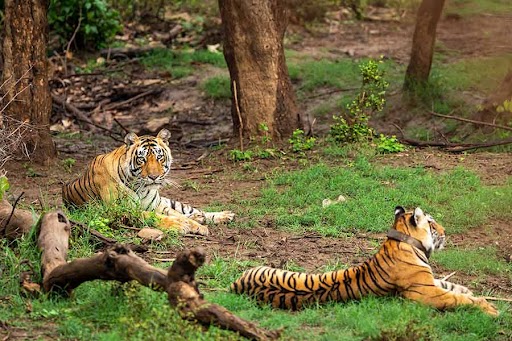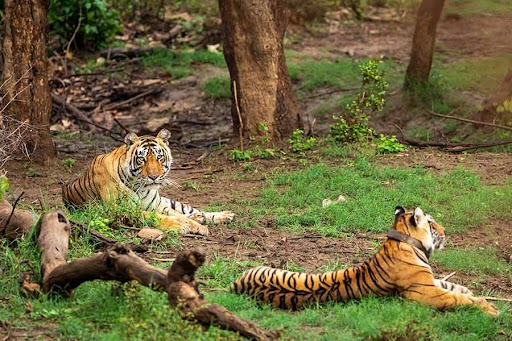A group of environmentalists gathered at Delhi's Jantar Mantar on Monday, demanding the cancellation of a proposal to redraw the boundaries of the Sariska Tiger Reserve in Rajasthan's Alwar district, alleging that the move would open over 50 mines that were shut following a Supreme Court order in May 2024.
Akhil Chandra, former director of the World Wildlife Fund, who participated in the protest, said the National Board for Wildlife and the National Tiger Conservation Authority have approved the redrawing of Sariska's critical tiger habitat boundaries, paving the way for reopening mining operations within 1 km of the reserve's border.
"This is an untouched forest area for tigers and other endangered species. Allowing mining in such an environmentally sensitive area will have severe long-term impacts on its flora and fauna," he claimed.
Environmental activist Ajay Joe claimed, "This decision is not only anti-wildlife, it is anti-people and against the collective future of our children. How can we allow extractive industries to destroy one of the last critical habitats of India's national animal?" Sneha Solanki of Tiger Trust Trail said the Supreme Court-appointed Central Empowered Committee revealed in 2018 that 31 hills had disappeared in Alwar since the Survey of India's 1967 topographic sheet.
"Redrawing Sariska's boundaries is unacceptable to the people of Alwar as it rewards violators. This sets a dangerous precedent to legalise similar violations across India's protected areas," she said.
In the early 2000s, Rajasthan’s Sariska Tiger Reserve became a chilling symbol of conservation failure.
By 2004, not a single tiger remained in the sanctuary that once hosted a thriving population wiped out, as it turned out, by unchecked poaching. Despite a 2002 NTCA survey claiming 16 tigers roamed the area, local suspicions of vanishing big cats were brushed aside until 2005, when officials were forced to confront the truth. Sariska had become a tiger reserve without tigers.
What followed was a rare ecological reboot, reintroduction of the apex predator and intensified protection measures. Two decades later, Sariska’s dry deciduous forests and scrub-thorn grasslands now echo with the calls of not just tigers, but leopards, sambar, nilgai, and a vibrant bird population, a clear conservation turnaround.
At a meeting in June, the Standing Committee of the National Board for Wildlife, headed by Environment Minister Bhupender Yadav, approved the proposal to alter the boundaries of the Sariska tiger reserve by expanding the CTH area from 881.11 sq km to 924.49 sq km while reducing the buffer zone from 245.72 sq km to 203.20 sq km.
The total notified area has marginally increased to 1,127.68 sq km from 1,126.83 sq km. The proposal was earlier recommended by the Chief Wildlife Warden, the State Board for Wildlife, the Rajasthan government and the National Tiger Conservation Authority.
The CEC in a report to the Supreme Court recently explained that the reconfiguration was based on "the pattern of tiger breeding while ensuring that the total area of CTH after rationalisation does not decrease, rather the area of the Sariska Wildlife Sanctuary should be increased".
It said that the boundaries of the sanctuary are proposed to become coterminous with the core tiger habitat to address legal and management challenges that have persisted for years.
The CEC observed that the rationalisation was carried out using robust scientific data, including camera-trap evidence, and that it enhanced landscape connectivity and conservation value without displacing any villages.
"The inclusion and exclusion of areas were based entirely on ecological rationale, with a singular focus on enhancing habitat integrity and conservation value," the report said.
The Telegraph Online had earlier reported that a plan to redraw the boundaries of Rajasthan’s Sariska Tiger Reserve is inching closer to approval, potentially paving the way for over 50 previously banned mining operations to resume.
“Even human-impacted hilly terrain can serve as crucial seasonal refuges or movement corridors, so classifying such areas as “degraded” without scientific validation is a danger indeed", experts told The Telegraph Online.












